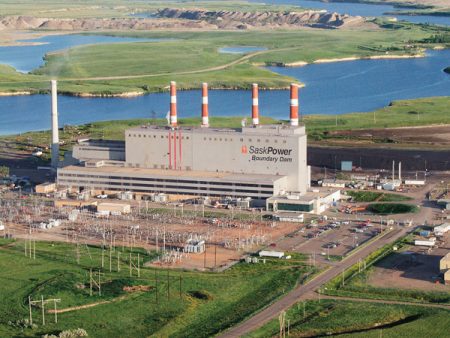April 8, 2017 – Canada has two of the largest carbon capture and sequestration (CCS) projects in operation today. Each will remove up to 1 million tons of carbon dioxide (CO2) from the atmosphere annually. Compared to the gigatons we emit, these are two small drops in a very large bucket. But if energy companies, industries, and governments were to invest in carbon capture could they reverse the rise in CO2 emissions?
In a paper published this week in Nature Climate Change, researchers from Imperial College London, look at the commercial viability of carbon capture and utilization (CCU) and how technologies that do this could contribute to reducing global warming. The paper entitled, “The role of CO2 Capture and Utilization in Mitigating Climate Change,” concludes that even with enhanced recovery of carbon and its reuse for industrial and chemical purposes, the contribution of the technology to climate reduction will amount to between 4 and 8%. They conclude “CCU may prove to be a costly distraction, financially and politically, from the real work of mitigation.”
States Dr. Niall MacDowell, the paper’s lead author, “Our aim with this work was to quantify what a reasonable contribution to the fight against climate change might be from carbon capture and utilization (CCU) relative to what is expected for carbon capture and storage (CCS).” But other than the use of the technology to enhance oil recovery, there was very little of a business case for investing in this field.
And yet CCS and CCU get mentioned in the triad of strategies to address keeping global mean temperatures from rising more than 2.0 Celsius (3.6 Fahrenheit) by the end of the century. In the last week, I posted an article on this very subject based on a study produced for the American Association for the Advancement of Science. The study proposed artificially sucking out 5 gigatons of CO2 annually from the atmosphere, double the amount of natural land-based sequestration from soil and trees. That would mean global deployment of both CCS and CCU technologies.
Clearly, there is a lack of concurrence on the viability of the technology to help mitigate the impact of anthropogenic carbon emissions.
Now add to this the attempt by President Trump to roll back the initiatives started by his predecessor that have accelerated the closing of coal-fired power plants across the United States with natural gas, solar, wind and hydro filling the gap. Wouldn’t CCS and CCU make coal clean?
The “clean coal” movement argues that coal can be used to make hydrogen from water and burning hydrogen would be far cleaner than natural gas. And to make the coal clean, CCU and CCS infrastructure attached to existing and new coal-burning facilities would produce net zero emissions.
Today coal-fired power plants emit 14 billion tons of CO2 into the atmosphere annually. Almost all of these plants are used for power generation. The industry believes coal can continue to contribute to energy generation if the costs of CCU and CCS can be brought down. Currently adding sequestration infrastructure to an existing coal-burning facility increases costs of operation by 20 to 30% or more. And that makes clean coal economically disadvantageous when compared to renewable and natural gas generated power.
Back in 2003 CCU and CCS costs to capture carbon were estimated at between $150 and $220 per ton. At the time it was hoped that through research and development within a decade those costs would drop to $10 per ton. That has not been the case either at the Quest Project in Northern Alberta nor at the Boundary Dam and Aquastore project in Saskatchewan.
But despite the unappealing economics, clean coal, CCU and CCS are still being pursued. For clean coal, coal gasification appears to be the new industry hope. The potential to get close to zero emissions while still burning coal remains a primary mission of the U.S. Department of Energy. Now even more with Donald Trump in charge.








